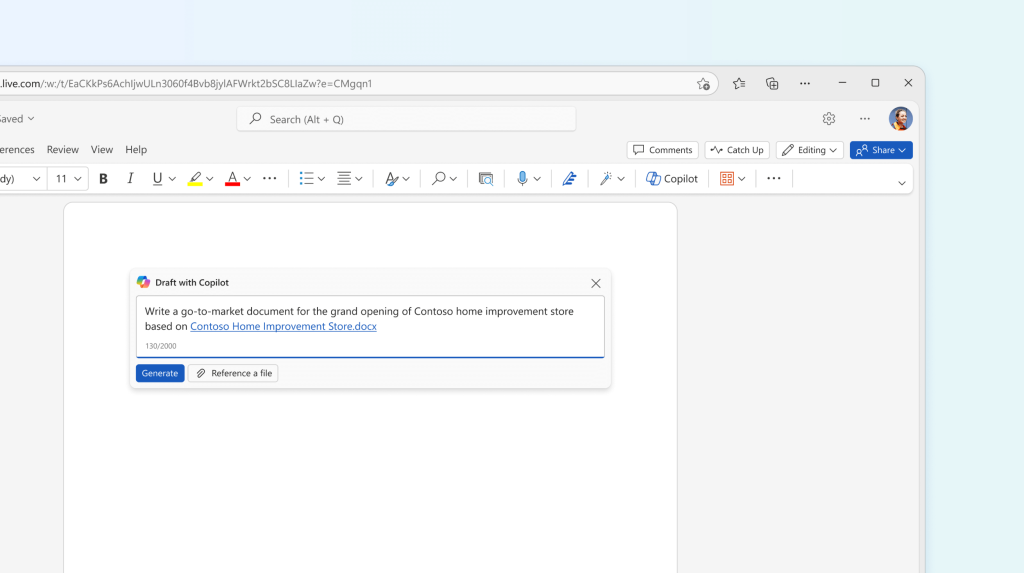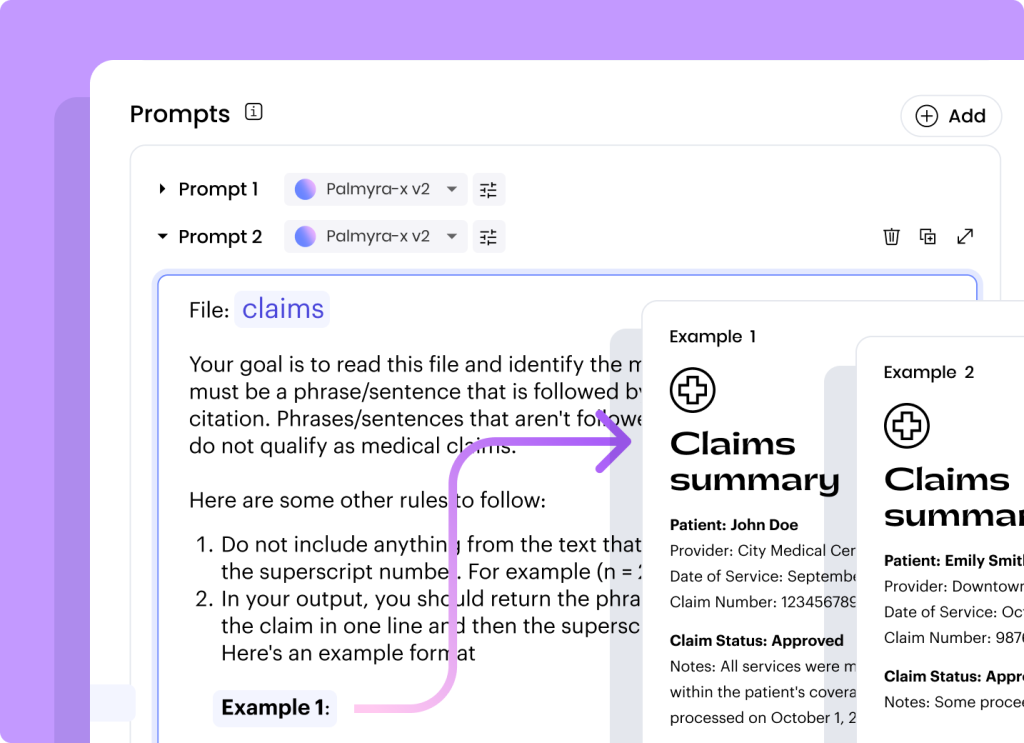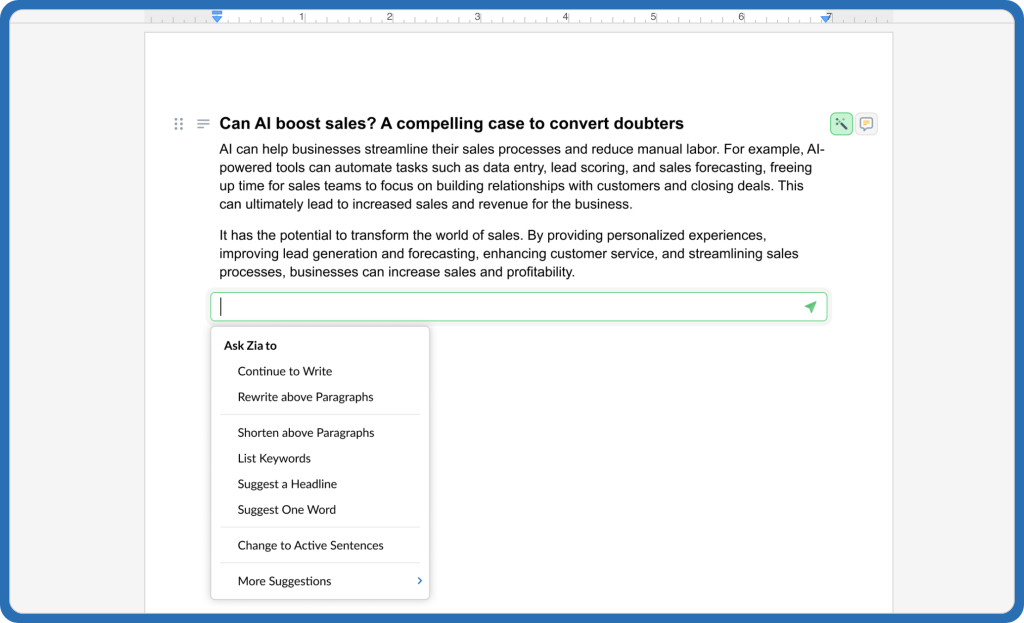
AI is transforming the way businesses operate, and nowhere is this more evident than in the realm of documents. AI Document solutions are not just about automating writing tasks – they’re about rethinking entire workflows. These tools can extract key insights from large reports, automate document approvals, ensure regulatory compliance, and generate accurate records in seconds. Whether you’re in legal, finance, HR, or operations, adopting the right AI Document platform can drastically reduce overhead, minimize human error, and unlock new levels of productivity. We’re going to showcase five cutting-edge AI Document solutions that are revolutionizing how modern companies handle documents from start to finish.
Quick Summary
- FuseBase – AI document creation, automation, and client portals
- Microsoft Copilot (Word) – AI for standardized docs in Microsoft 365
- Writer – Brand-compliant and policy-aligned document editing
- Docugami – Contract automation and structured document workflows
- Zoho Writer + Zia AI – AI document tools integrated with Zoho apps
What’s an AI Document?
AI Document is a platform that uses artificial intelligence to automate and optimize document-centric processes across departments. These tools can analyze documents, extract structured data, detect compliance issues, automate approvals, and generate standardized outputs such as contracts, reports, and records. By embedding AI into document workflows, companies can reduce human error, cut operational costs, and accelerate decision-making. AI Document solutions are especially impactful in finance, HR, legal, and logistics – where document precision and processing speed are mission-critical.
Key Benefits of AI Document Across Industries
AI Document tools are reshaping the foundation of how modern businesses operate. No longer limited to simple editing or storage, these platforms offer end-to-end automation for document-heavy workflows – across departments, industries, and use cases. Here’s a deeper look at the transformative benefits they deliver to business operations:
1. End-to-End Workflow Automation
AI Document platforms integrate directly into your business systems to automate the full lifecycle of a document – from creation and approval to archiving and compliance. Whether it’s generating a contract, sending it for e-signature, or storing it securely, AI can handle multiple steps automatically. This reduces manual intervention, speeds up internal processes, and ensures that nothing falls through the cracks.
Example: HR teams can automate onboarding document generation, approvals, and storage without repetitive tasks.
2. Intelligent Data Extraction and Structuring
Documents often contain valuable but buried information – invoices, contracts, reports, or scanned files. AI solutions use OCR (Optical Character Recognition) and Natural Language Processing (NLP) to read, interpret, and extract structured data from unstructured content. This enables companies to feed data into CRMs, ERPs, or analytics tools instantly and without error-prone manual entry.
Example: Finance teams can automatically extract payment terms, totals, and vendor names from uploaded invoices.
3. Faster, Smarter Decision-Making
With the ability to instantly summarize documents, flag key sections, and highlight inconsistencies or risks, AI Document solutions reduce the time leaders spend interpreting content. Executives, project managers, and legal teams can get to the heart of complex documents quickly, allowing for faster responses and more strategic decisions.
Example: A project manager receives a summarized status report with AI-generated action points and flagged delays.
4. Enhanced Compliance and Risk Mitigation
Compliance is a moving target – and AI helps companies stay ahead of it. These solutions can detect outdated legal clauses, missing signatures, regulatory inconsistencies, or improper formatting across large sets of documents. They also generate audit trails, ensuring that your document history is always traceable and verifiable.
Example: A legal team is alerted when a contract uses an old NDA template that no longer meets regulatory standards.
5. Scalable Operations With Lower Overhead
Manual document handling is a bottleneck, especially as your company grows. AI Document platforms eliminate the need to hire additional staff just to manage paperwork. Instead, they empower small teams to manage large volumes of documentation consistently across multiple business units and client accounts.
Example: A small operations team handles thousands of client documents each month using automation, without additional headcount.
6. Integration With Business Ecosystems
The most powerful AI Document solutions don’t exist in a silo. They integrate with tools like Salesforce, HubSpot, QuickBooks, Slack, Microsoft 365, and Google Workspace. This means your documents can trigger workflows, notifications, updates, or billing events automatically and based on context.
Example: A signed contract triggers automated client onboarding in your CRM and alerts your customer success team in Slack.
7. Better Customer and Team Experience
By automating time-consuming document processes, teams can focus more on client relationships, innovation, and service. Clients benefit too – from faster approvals, clearer documentation, and seamless digital experiences.
Example: Clients receive personalized contracts and onboarding docs within minutes of signing up, without manual delays.
Best AI Document Tools in 2025
AI-powered document platforms are reshaping how businesses manage, process, and deliver mission-critical documents. Below are five of the top AI document solutions leading the charge, built for real-world business transformation.
1. FuseBase – Best for Unified Document Management, Automation, and External Collaboration

FuseBase is an all-in-one AI document solution built to support both internal operations and external client collaboration. Designed for businesses that depend on document-heavy workflows, FuseBase empowers teams to create, organize, automate, and share documents with AI at the core. The platform includes an AI writing assistant that helps generate and refine documents, along with built-in automation triggers, branded client portals, secure file sharing, and granular permissions – all in one interface.
Pros:
- AI-powered document creation, rephrasing, summarization, and formatting.
- Smart automation to trigger actions based on document events.
- Fully customizable client portals with secure document sharing.
- Structured folder system with permissions, roles, and team collaboration tools.
- Built-in document tracking, commenting, and approval flows.
Cons:
- Full feature set may be more than necessary for basic writing tasks.
- Requires onboarding to leverage advanced automation and portal capabilities.
🚀 Example of how AI Agents transform your work:
2. Microsoft Copilot (Word) – Best for Enterprise Teams Operating in Microsoft 365

Microsoft Copilot brings AI-powered assistance into Word, Excel, Outlook, and other Microsoft 365 apps. It enables enterprise teams to generate structured content, summarize lengthy reports, reformat internal documentation, and extract insights directly within familiar tools. It’s especially suited for organizations focused on scale, compliance, and standardized outputs.
Pros:
- Deep integration with the Microsoft ecosystem.
- Enterprise-ready with access controls, audit logs, and compliance features.
- Ideal for automating formal business documents like reports, contracts, and board memos.
- Can pull contextual data from Outlook, Excel, and Teams to generate relevant content.
Cons:
- Requires Microsoft 365 subscription
- Less flexible for creative or client-oriented documentation
- Customization options for workflows are limited without additional Microsoft tools
3. Writer – Best for Brand-Compliant and Policy-Aligned Documentation

Writer is an AI content platform focused on keeping business documents consistent, compliant, and on-brand. It allows teams to define style guides, tone preferences, legal language, and approved terms – and then enforces those standards using custom-trained AI. This is especially valuable for documentation in HR, legal, customer service, or marketing, where consistency and compliance are non-negotiable.
Pros:
- Custom AI trained on your company’s terminology and writing standards
- Real-time tone, grammar, and compliance suggestions
- Collaborative workflow support with built-in approval processes
- Strong version control and audit trail for regulated industries
Cons:
- Primarily designed for editing/enforcing content rather than generating long-form documents
- Requires setup to build internal language and compliance rules
🚀 Another example of AI that transforms how businesses work:
4. Docugami – Best for Contract Automation and Compliance-Heavy Workflows

Docugami specializes in transforming unstructured, long-form documents into structured, actionable data. It’s built for operational teams working with contracts, policy docs, compliance reports, and other repetitive business documents. The platform helps organizations identify patterns, reuse language, and automate drafting through AI-generated templates and clause libraries.
Pros:
- Converts documents into reusable components and structured datasets
- Enables creation of standardized templates from real document history
- Great for reducing manual effort in contract management, audits, and legal reviews
- Supports risk flagging and clause comparisons for operational teams
Cons:
- Focuses more on automation and structuring than free-form document writing
- Onboarding needed to train AI on company-specific documents
5. Zoho Writer + Zia AI – Best for Cloud-Based Operational Teams Using Zoho Ecosystem

Zoho Writer, powered by Zia AI, is a smart document creation platform integrated into Zoho’s business suite. It supports document drafting, grammar enhancement, tone adjustment, and automated approvals. Teams using Zoho CRM, People, or Finance can easily automate recurring document processes like hiring letters, proposals, or service summaries within their existing tools.
Pros:
- Context-aware AI assistance for grammar, tone, and structure
- Integrated with Zoho’s full business suite (CRM, HR, finance)
- Supports workflow automation and approval paths for document processes
- Real-time collaboration and cloud storage included
Cons:
- Most powerful when used within the Zoho ecosystem
- Less advanced in creative content generation compared to standalone AI tools
Conclusion
AI document solutions are transforming business operations by automating content creation, improving accuracy, and streamlining workflows. These platforms help teams reduce manual effort and ensure consistency across internal and client-facing documents.
FuseBase leads the way as the most complete solution, offering AI-powered writing, workflow automation, and branded client collaboration – all in one platform. Tools like Microsoft Copilot and Docugami also deliver strong capabilities for enterprise and compliance-heavy environments. For teams focused on efficiency, consistency, and scale, adopting an AI document platform is no longer optional – it’s essential. And FuseBase is the clear choice for businesses ready to elevate their document operations with intelligent automation.
